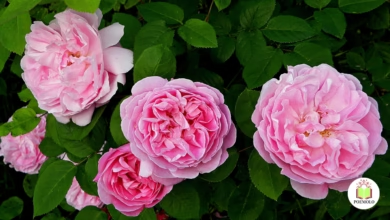Poetry, in its various forms, remains one of the most universal and timeless art forms in human history. The power of poetry is not just in the words themselves, but in how these words resonate with individuals across different cultures, eras, and experiences.
Whether it is the rhythmic structure of classical sonnets or the free-flowing creativity of spoken word, poemas (the Spanish word for poems) offer us a unique and profound way to explore the depths of human emotion and understanding.
In this article, I will delve into the timeless beauty of poemas, how poetry connects us all, and why its power has endured for centuries.
Understanding the Allure of Poemas

What is it about poemas that captures the human imagination in such a deep and lasting way? At its core, poetry is an expressive art form that reflects the beauty, complexity, and fragility of the human experience.
Through vivid imagery, emotional depth, and a distinctive use of language, poemas often evoke feelings that are impossible to articulate through ordinary speech. This ability to create powerful connections between the poet and the reader is what gives poetry its timeless beauty.
Unlike many other forms of written expression, poetry is highly condensed. Each word, each phrase, each line often carries multiple layers of meaning, making it both a form of art and an emotional experience.
This compactness forces both the poet and the reader to focus intently on the language, evoking images and emotions with minimal resources. Poemas tend to leave more space for interpretation and personal engagement, which is why different readers may experience the same poem in different ways.
The aesthetic quality of poetry—the musicality of words, the beauty of metaphors, and the way the poet arranges the elements of language—ensures that poemas continue to capture the attention of readers and listeners alike.
Whether it is the delicate meter of a traditional haiku or the powerful rhythm of a slam poetry performance, the structure of poetry enhances the emotional impact of the message being conveyed. This inherent beauty is what has allowed poetry to endure for millennia.
The Threads of Words
Through ink and paper, words take flight,
Carried on the wings of silent night.
A whispered thought, a gentle breeze,
Across the world, it finds its ease.
In every line, a heart beats strong,
A melody, a timeless song.
From distant lands, through time and space,
Poetry’s touch, a warm embrace.
A line, a word, a soft refrain,
Connects us all through joy and pain.
In every stanza, truth is found,
Our voices rise without a sound.
So let the words flow wide and free,
Binding hearts, a mystery.
In every poem, we share our soul,
Together, whole, we make us whole.
Analysis Table The Threads of Words
| Element | Description |
| Title | “The Threads of Words” |
| Theme | The poem explores the theme of connection through poetry—how words, though written or spoken, bridge distances, emotions, and time, uniting people through shared experiences. |
| Tone | Warm and Reflective. The poem evokes a sense of unity, comfort, and emotional depth. |
| Imagery | The poem uses strong visual imagery like “ink and paper,” “wings of silent night,” and “a line, a word, a soft refrain” to convey the emotional and timeless nature of poetry. |
| Metaphors | The poem uses metaphors like “words take flight,” “a melody, a timeless song,” and “binding hearts, a mystery” to illustrate how poetry connects and transcends barriers. |
| Rhyme Scheme | The poem follows a consistent AABB rhyme scheme, contributing to its musical and rhythmic quality, making it flow smoothly and adding to its harmonious tone. |
| Structure | The poem consists of five quatrains (four-line stanzas), which gives it a balanced and structured form, symbolizing how poetry brings together distinct parts (words) into unity. |
| Personification | Poetry is personified, as in “a heart beats strong,” where it is described as having a life and voice of its own, emphasizing its emotional impact on readers. |
| Alliteration | The use of alliteration in lines such as “A line, a word, a soft refrain” enhances the rhythm and flow of the poem. |
| Symbolism | The poem symbolically represents connection through “threads” of words, suggesting that poetry is the medium that links us all together. |
| Message/Meaning | The poem conveys that poetry is a universal language that transcends time and space, allowing individuals to find shared experiences, comfort, and unity through words. |
A Brief History of Poemas: Poetry’s Universal Reach
Poetry has been an integral part of human culture for as long as recorded history. Its origins can be traced back to oral traditions, where poems were often recited as a form of storytelling or as part of religious rituals.
Related article: Birthday Friendship Poems
The oldest known surviving poetry dates back to the Sumerian civilization around 2000 BCE. The famous Epic of Gilgamesh is one of the earliest known examples of epic poetry, offering profound insights into human existence, mortality, and the quest for meaning.
Throughout history, poemas have been used to preserve culture, express emotions, and comment on social and political issues. In ancient Greece, poets such as Homer and Sappho wrote works that explored themes of heroism, love, and human nature.
The Iliad and The Odyssey continue to be some of the most widely read and studied works in Western literature. Similarly, in ancient Rome, poets like Virgil and Ovid used poetry to both celebrate and criticize society, creating lasting legacies.
In the medieval period, poetry became an essential medium for exploring religious and philosophical themes. The Divine Comedy by Dante Alighieri and the Canterbury Tales by Geoffrey Chaucer are prime examples of how poetry has been used to explore the human condition, morality, and spirituality.
The Renaissance period marked a flourishing of poetry in Europe, with writers like William Shakespeare, John Milton, and Edmund Spenser making lasting contributions to the art form. The sonnet, in particular, became a favorite poetic form during this time. Shakespeare’s sonnets, with their exploration of love, time, and beauty, are some of the most iconic works in English literature.
In the modern era, poets such as Walt Whitman, Langston Hughes, and Sylvia Plath broke away from traditional forms to experiment with language, structure, and themes. The Romantic poets, including William Wordsworth and John Keats, placed great emphasis on emotion, nature, and individual experience, influencing how poetry is written and read today.
The diversity of poetic forms across history—from epic poems to lyrical poetry, from haikus to spoken word—demonstrates how poetry has evolved while maintaining its core function as a vehicle for emotional expression. No matter the era or culture, poemas remain a significant medium for connecting people to their thoughts, feelings, and one another.
A Bridge Between Cultures and Time
One of the key reasons that poemas continue to resonate with people around the world is their ability to evoke universal emotions. Themes such as love, loss, grief, hope, and identity transcend cultural and temporal boundaries.
The human experiences of joy, sorrow, and longing are not confined to a single place or time—they are felt by people across the world, across generations.
This emotional resonance is a central feature of why poetry connects us so deeply. Consider the poemas of Pablo Neruda, who wrote of love, politics, and the human condition with a sensitivity that continues to touch readers globally.
Whether reading his Twenty Love Poems or his politically charged Canto General, readers across the world find connections to their own emotions and experiences. Similarly, Maya Angelou’s works about freedom, identity, and the black experience in America continue to inspire readers from all walks of life.
Related article: A poem of love: Hanoun and Daleth’s Chapter
Even though the words in a poem may be tied to a specific culture or historical moment, the feelings and insights they convey are often deeply relatable to a wide range of people. For example, a poem written by Rainer Maria Rilke in early 20th-century Europe about existential loneliness can still resonate with a reader in contemporary Asia or Africa.
These emotional connections are what give poemas their timeless quality—the ability to speak across time and space to evoke deep empathy and understanding.
Translation also plays an essential role in allowing the power of poetry to cross cultural boundaries. Translating a poema from one language to another allows readers to access poems written in a completely different linguistic and cultural context. Yet, the emotional undercurrent often remains the same.
For example, a translated poem by Gabriela Mistral, a Chilean poet and Nobel laureate, can capture the essence of maternal love and longing in a language that may be unfamiliar to non-Spanish speakers, yet still evoke the same powerful emotional response.
The Therapeutic Power of Poemas
In addition to fostering connection and evoking emotion, poetry can also serve as a therapeutic tool for both the poet and the reader. The act of writing or reading poems can offer a means of self-reflection, emotional release, and healing.
For writers, composing poems is often a way to work through difficult emotions or experiences. Many poets have used poetry as a means of understanding their own lives and making sense of their personal struggles.
Sylvia Plath, for instance, wrote some of her most powerful and emotionally raw poems during a period of deep personal turmoil. By putting her emotions onto paper, she was able to express feelings of despair, alienation, and longing in ways that helped her process her inner struggles.
Similarly, readers can find solace in the poems of others. For someone grieving the loss of a loved one, reading poems on loss can provide a sense of shared experience and emotional catharsis. Similarly, poems about resilience or hope can inspire people to keep moving forward in difficult times.
Poetry therapy, a recognized form of expressive therapy, uses poetry to help individuals explore their emotions and gain insight into their thoughts and behaviors. In various therapeutic settings, poems are used to facilitate discussion, self-expression, and emotional processing.
For many, reading or writing poetry offers a safe space for exploring the complexities of the human experience and can lead to personal growth and healing.
The Role of Technology in Shaping the Future of Poemas

In today’s digital age, the way we consume and create poetry has undergone significant changes. The internet and social media platforms have made poetry more accessible than ever before, allowing poets to reach audiences across the globe in an instant.
Poetry blogs, YouTube performances, and Instagram poets have democratized poetry, enabling more people to engage with it on their own terms.
The rise of spoken word poetry on platforms like YouTube has also contributed to the growing popularity of poetry in the digital age. The spoken word tradition, which emphasizes performance and oratory, allows poetry to come to life in a new and engaging way.
Poets such as Sarah Kay, Phil Kaye, and Rudy Francisco have gained massive followings by performing their poems online, providing a platform for poetry that emphasizes the power of voice and performance.
Social media has also allowed poetry to be more interactive. Platforms like Instagram have allowed poets to connect directly with their audience through short, visually appealing posts.
Poetry hashtags such as poetrycommunity and writersofinstagram have helped create online spaces where poets from around the world can share their work, collaborate, and discuss their craft. This accessibility and interactivity has made poetry more inclusive, diverse, and widespread than ever before.
Conclusion
As we have seen, the timeless beauty of poemas lies in their ability to evoke emotion, create connections, and transcend time and space. Whether read on the pages of a book or heard aloud in a performance, poetry remains a powerful vehicle for exploring the deepest recesses of the human soul.
From ancient epics to modern spoken word, poetry continues to bring people together by offering a shared experience of reflection, expression, and understanding.
In the future, poetry will likely continue to evolve, incorporating new forms, technologies, and languages. Yet, the essence of what makes poemas so powerful—their ability to connect us through shared human emotions and experiences—will remain unchanged.
As long as we continue to feel, reflect, and create, poetry will always have a place in our hearts and minds, offering us a way to understand the world and our place within it.
In the vast and diverse tapestry of human expression, poetry stands as a constant thread, binding us all together in a shared journey of connection, healing, and discovery. Whether you are reading a classic poem or exploring a new poetic voice, the beauty of poemas will always offer you a way to reflect, feel, and connect with the world around you.





